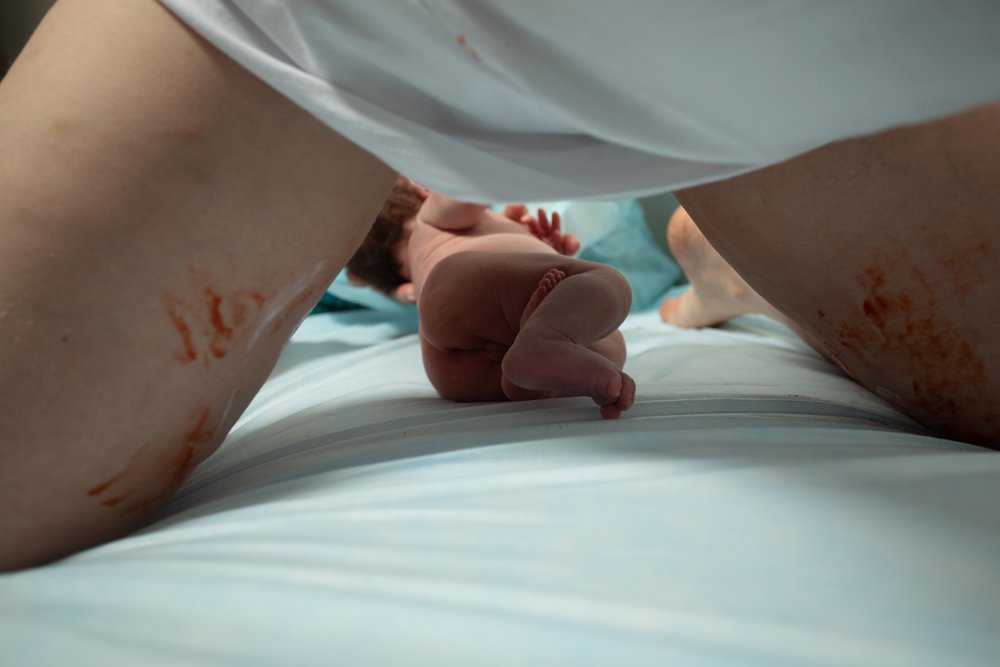 Up to 50% of women who have vaginal births experience perineal tearing. Perineal tearing can make recovery harder, so we want to take steps during pregnancy to minimize or eliminate perineal tearing. There are many factors to consider when working to prevent perineal tearing. Read on for risk factors and tips you can implement during pregnancy and labor to prevent perineal tearing.
Up to 50% of women who have vaginal births experience perineal tearing. Perineal tearing can make recovery harder, so we want to take steps during pregnancy to minimize or eliminate perineal tearing. There are many factors to consider when working to prevent perineal tearing. Read on for risk factors and tips you can implement during pregnancy and labor to prevent perineal tearing.
Risk factors:
There are several factors that put you at higher risk for perineal tearing. First time moms, babies with higher weight, use of forceps1, less physical activity during pregnancy2, and closed glottis pushing (holding your breath and pushing)3 all can increase risk of perineal tearing.
Some of these we can address, others we cannot as directly. Read on to learn what you can do to prevent perineal tearing.
How to prevent perineal tearing:
- Make sure your pelvic floor tissues are hydrated. This makes the muscles more pliable which can reduce your risk of perineal tearing. While you want to focus on staying hydrated throughout pregnancy, it’s vital to hydrate in the last month of your pregnancy to prevent perineal tearing. We recommend water with electrolytes like magnesium, sodium, and potassium to make sure the water permeates the cell walls of the muscle and gets the tissue hydrated!
- Choose a provider who will allow you to push in positions other than on your back. Pushing on your back can increase risk of perineal tearing. Lying on your back does not allow the pelvic bones to adequately move. This stiffness within the bones (which connect to the muscles!) can make the pelvic floor muscles stiff and cause perineal tearing. If you want to reduce or prevent perineal tearing, try positions like on your side or all fours to allow the pelvis to freely move.
- Avoid holding your breath and pushing to prevent perineal tearing. Despite what your nurses and provider may direct you to do in the middle of labor, holding your breath and pushing should only be done in emergencies. This pushing technique can make the pelvic floor muscles tighten instead of relax and lengthen. This can increase risk of perineal tearing. **insert link for prevent perineal tearing guide**
- Work on your fears to prevent perineal tearing. Studies show that the pelvic floor tightens when we are scared. If you have fears related to birth or postpartum, your pelvic floor could tighten during pushing. This could contribute to perineal tearing. If you want to prevent perineal tearing, working on your fears is a must!
- Work with a pelvic floor physical therapist who specializes in obstetrics (that’s us!) We will be able to give you positioning designed for your body and pelvis, teach you how to push properly, and help you conquer your fears to prevent perineal tearing. We have specialized training in the pelvic floor, pregnant bodies, and labor to help you prevent perineal tearing!
If you want to read more tips about prevent perineal tearing check out these blogs here and here.
If you want to stop guessing and put your worries at ease during pregnancy, book a free consult with us virtually, in Wexford, PA, or Greensburg, PA to work with our pelvic floor Physical Therapists. We help clients every week prevent perineal tearing and would love to help you too!
- Barca et. al. Risk Factors in Third and Fourth Degree Perineal Tears in Women in a Tertiary Centre: An Observational Ambispective Cohort Study. Journal of personalized medicine. Vol. 11, no. 685p. 685. https://doi.org/10.3390/jpm11080685
- Silva JC, Diaz BÁ, Barakat R, Coterón J, Refoyo I. Physical activity during pregnancy is associated with a lower number of perineal tears. Translational Sports Medicine. 2021;4(1):38-45. Accessed September 26, 2023. https://search.ebscohost.com/login.aspx?direct=true&db=s3h&AN=147840249&site=eds-live
- Kamel, et. al. Contraction of the levator ani muscle during Valsalva maneuver (coactivation) is associated with longer active second stage of labor in nulliparous women undergoing induction of labor. American Journal of Obstetrics and Gynecology. Volume 220 issue 2, p 189. E8, February 2019. https://www.ajog.org/article/S0002-9378(18)30895-0/fulltext?fbclid=IwAR03M0B5xlrKt5dyyw6V0vCR7rMXArHF6VAp59OtuaPqiFv4LgKJ5bC44wc
